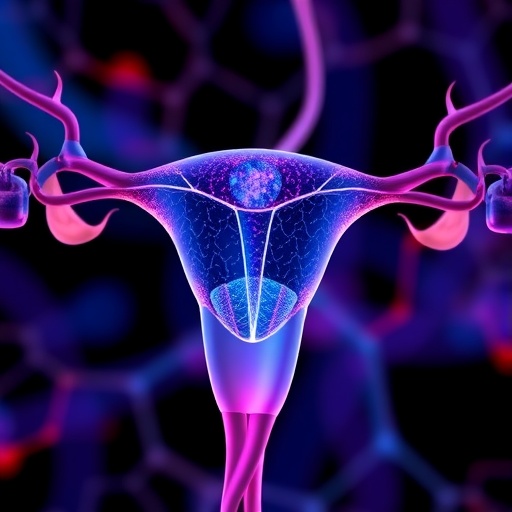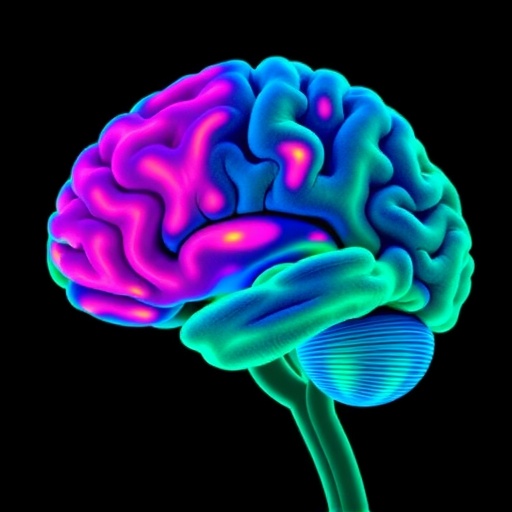In a groundbreaking study that could revolutionize our understanding of ovarian aging, researchers have conducted an extensive quantitative proteomic analysis to explore the contrasting paths of pathological and physiological ovarian changes. This research, led by Bai and colleagues, meticulously evaluates models that signify the early indicators of ovarian aging. What sets this study apart is its dual focus: while it delves into the biological mechanisms underlying age-related changes in ovarian function, it also identifies potential biomarkers for early detection and therapeutic targets that could mitigate these effects.
The study is pivotal as it highlights the significant differences between pathological and physiological aging processes in ovaries. Pathological aging is often associated with disorders such as ovarian insufficiency or other related complications, while physiological aging reflects the natural process of aging that every woman experiences. Understanding these distinctions is crucial for developing tailored approaches in women’s health, particularly in reproductive health. The researchers’ comprehensive survey of proteins involved in these processes reveals much about the cellular interactions that influence ovarian health over time.
One of the standout features of this research is its use of advanced proteomic technologies. By applying mass spectrometry, the team was able to quantify protein expressions in ovarian tissues, which are crucial for revealing intricate biological processes. This method provides a high-resolution map of the protein landscape within ovaries as they age, illustrating how specific proteins rise and fall in abundance. Such detailed insights into proteomic changes are invaluable; they shed light on the potential disruptions in ovarian health that could lead to fertility problems or other menopause-related issues.
The identification of early biomarkers holds particular promise. By pinpointing proteins that exhibit altered expression patterns in the early stages of ovarian aging, the researchers provide a window of opportunity for early intervention. This could mean that women may soon have access to predictive tests that measure these biomarkers, offering them and their healthcare providers a clearer picture of their reproductive health. The implications are substantial; with earlier detection of potential issues, targeted therapeutic strategies can be developed that maximize fertility options for women.
In addition to identifying biomarkers, the study unravels the molecular mechanisms driving these changes. The research highlights the role of various signaling pathways that are activated during the aging process. For instance, findings indicate notable alterations in pathways related to apoptosis, inflammation, and folliculogenesis. Understanding these pathways offers potential therapeutic targets that could mitigate age-related declines in ovarian function. With continued research, it might be possible to pharmacologically intervene in these pathways, correcting imbalances that lead to pathological outcomes.
Moreover, this study emphasizes the importance of a nuanced approach to women’s health. Traditional views of aging often fail to encapsulate the complexity of biological processes that are at play in the ovaries. By addressing both the physiological and pathological aspects of ovarian aging, the research champions a more personalized medicine approach. This perspective could lead to individualized treatment plans based on the unique proteomic signatures of women, aligning interventions to their specific needs and biological realities.
The implications of this research extend beyond the laboratory. The potential for developing clinical applications based on the findings could lead to enhanced fertility preservation strategies and new treatments for conditions such as premature ovarian failure. This aspect is particularly pertinent in a time when many women are delaying childbirth for personal, educational, or professional pursuits. Providing actionable strategies for maintaining ovarian health can empower women to make informed decisions about their reproductive futures.
Another remarkable facet of this investigation is its multidisciplinary approach. The collaboration among experts in proteomics, gynecology, and molecular biology culminates in a rich understanding of ovarian aging. This kind of synergy fosters innovation and opens up frontiers for further research endeavors. Future studies that build upon these findings may yield even deeper insights into the life course of ovarian health and how best to support women throughout different stages of their lives.
The study not only contributes to the academic community but also sparks conversations in public forums about women’s reproductive health. The identification of biomarkers and potential therapeutic targets can engage women in discussions about their health proactively. When women are informed about the biological aspects of aging and their relevance to reproductive health, they are better positioned to advocate for themselves within healthcare systems.
As research continues to refine our understanding of ovarian aging, it also prompts ethical considerations. How will these findings be integrated into clinical practice, and what measures will be put in place to ensure access and equity in reproductive health? These are questions that cannot be overlooked as scientific advancements promise to reshape women’s healthcare.
The research team’s commitment to transparency is evident, with a clear dedication to sharing their findings with the broader community. Open access to their published work paves the way for other researchers to build on these insights, facilitating knowledge transfer that could enhance global understanding of ovarian aging. Each step taken in disseminating this information serves to inspire continued exploration and innovation in this vital area of women’s health.
In conclusion, the study of ovarian aging as presented by Bai et al. opens new doors and invites further investigation into the diverse biological pathways involved. The identification of early biomarkers and therapeutic targets signifies a potential turning point in how we approach women’s reproductive health. As scientists continue to peel back the layers of complexity surrounding ovarian aging, we move closer to a future where women can confidently navigate the aging process with tailored support and innovative interventions.
Advancements in research like this remind us of the importance of listening to women’s health needs and ensuring that scientific inquiries are aligned with those needs. With continued focus on the intersection of aging, health, and biological understanding, there is immense potential to transform not only clinical practices but societal perceptions of women’s reproductive health and aging.
Subject of Research: Ovarian Aging
Article Title: Quantitative proteomic analysis of pathological and physiological ovarian aging: model evaluation, molecular mechanisms, and identification of early biomarkers and therapeutic targets.
Article References:
Bai, M., Zhang, L., Wu, W. et al. Quantitative proteomic analysis of pathological and physiological ovarian aging: model evaluation, molecular mechanisms, and identification of early biomarkers and therapeutic targets.
J Ovarian Res 18, 287 (2025). https://doi.org/10.1186/s13048-025-01874-1
Image Credits: AI Generated
DOI: https://doi.org/10.1186/s13048-025-01874-1
Keywords: Ovarian aging, proteomics, biomarkers, women’s health, reproductive health, therapeutic targets.
Tags: age-related ovarian changescellular interactions in ovarian functionearly detection of ovarian agingmass spectrometry in ovarian researchovarian aging biomarkersovarian insufficiency disordersphysiological vs pathological ovarian agingprotein expression in ovarian tissuesproteomic analysis in women’s healthreproductive health advancementstherapeutic insights for ovarian healthwomen’s health research breakthroughs




